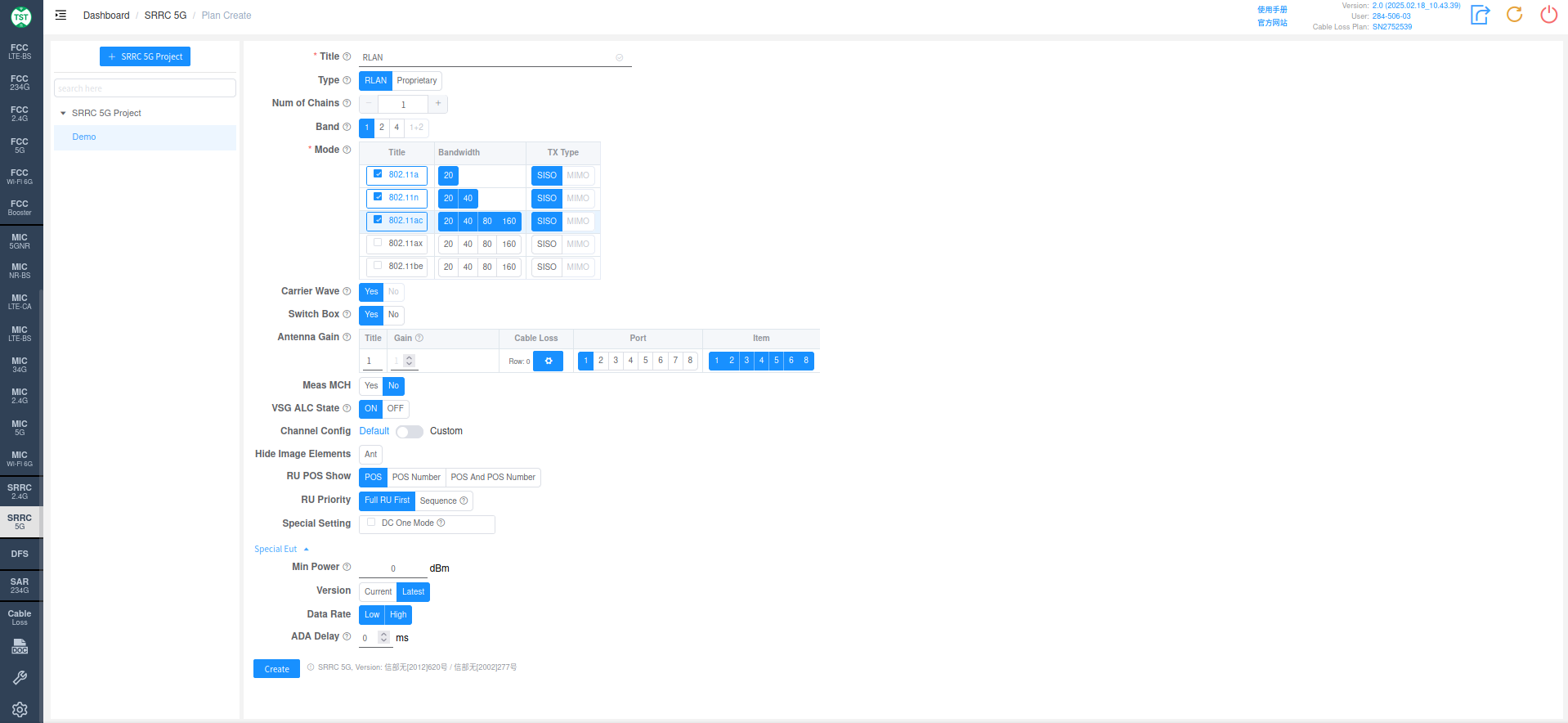Creating a Test Plan - SRRC 5G
RLAN

The relevant product characteristic descriptions for creating a test plan for RLAN are as follows:
Type: Technical Category, RLAN
Num of Chains: Number of transmit chains (antennas) the product has.
Band: Operating frequency bands supported by the product. Band 1+2 refers to the entire frequency range of 5150 ~ 5350MHz. If the product supports 160MHz bandwidth, when the channel is 5250MHz, it will cross Band 1 and 2 simultaneously, which is what is referred to as Band 1+2. If the product does not support 160MHz bandwidth, there is no need to select Band 1+2.
Mode: Modes and bandwidths supported by the product, as well as TX Type (SISO / MIMO / SISO+MIMO) in multi-antenna scenarios.
RU Config: RU configuration supported by 802.11ax devices.
Carrier Wave: Whether the product supports carrier wave transmission. If Yes is selected, the frequency error will be measured using carrier mode, and the test setup will be significantly different from modulated signal testing.
Antenna Gain:
Title: Antenna number, named sequentially by default as 1, 2, 3, 4..., or manually input other names according to customer requirements.
Gain: Gain of each antenna in the corresponding frequency band.
Cable Loss: Cable loss of the RF cable from the product's antenna port to the Switch Box (RF port of the switch) or SA (Spectrum Analyzer, if not using a switch directly). How to Create Common Cable Loss.
Port: Port number of the switch connected to the product's antenna, e.g., Ant1 connected to port 1, Ant2 connected to port 2.
Item: List of all test items included in this standard. *For known product types such as WIFI, Bluetooth, BLE, Zigbee, etc., the software has selected the default required test items based on their respective technical characteristics. Of course, you can also select some items for testing according to your testing needs. Note: In some standards, test parameters are mutually referenced between items. If only some items are checked, the test may not be able to proceed. Therefore, it is recommended to create a test plan using the default items directly. For multi-antenna products, to reduce workload, the first antenna will by default perform tests for all applicable items. However, other antennas have had some mandatory test items selected according to standard requirements. For non-mandatory items, you can check them yourself as needed.
Meas MCH: Confirm whether to measure the middle channel. SRRC defaults to measuring only LCH and HCH. If the customer has special requirements to measure MCH, select Yes for this item to enable testing.
